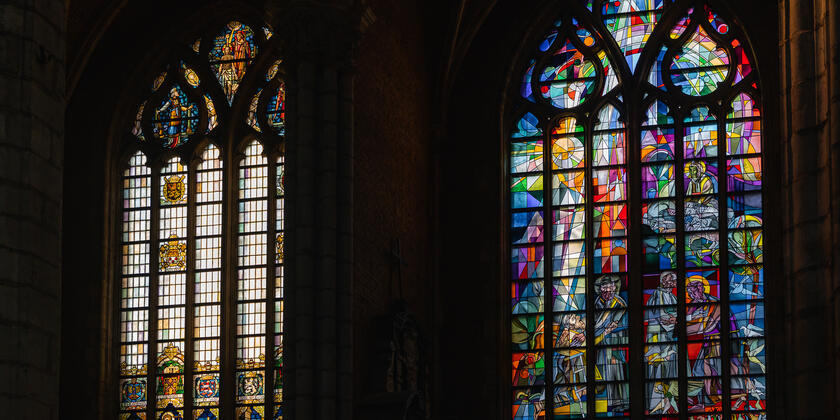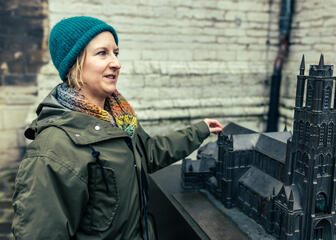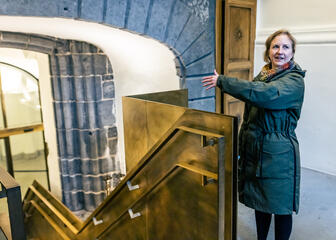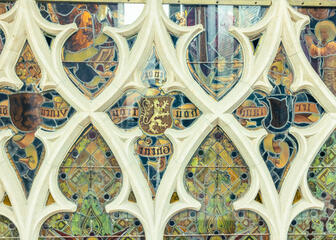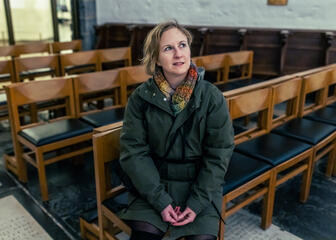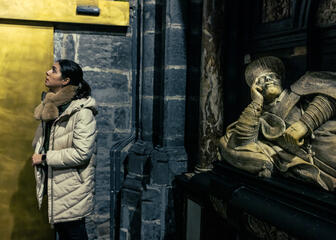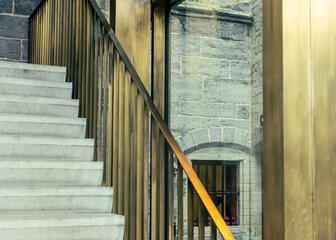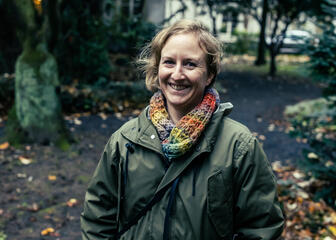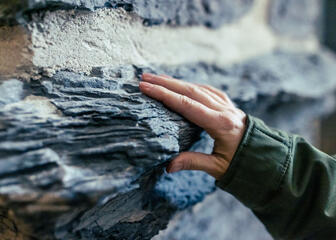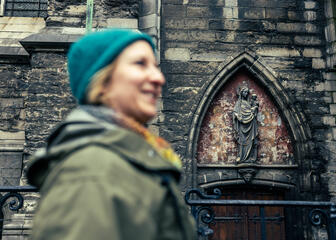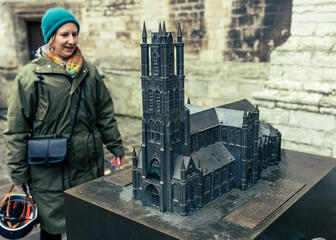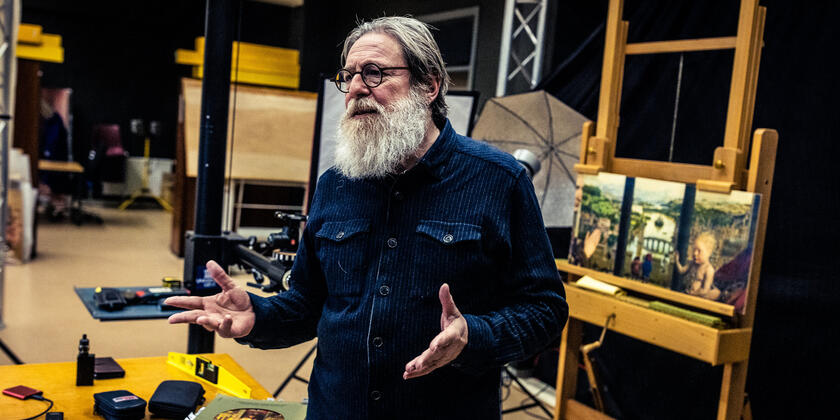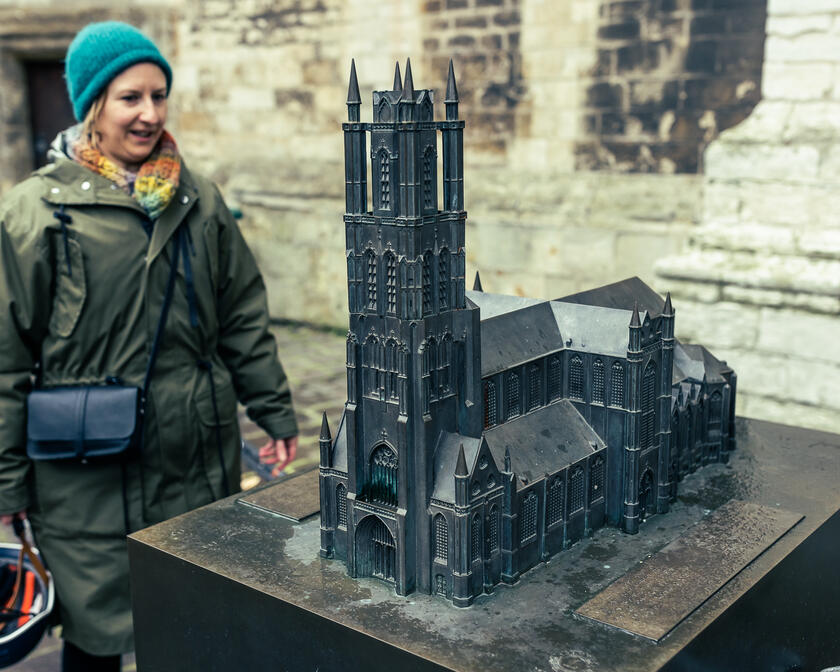
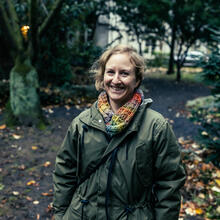
Work to do
The Ghent Altarpiece is a world-famous work of art, but we were faced with two serious problems. Firstly, the painting was displayed in a kind of concrete bunker in the Villa chapel. It was a badly ventilated space that was also hard to find for visitors. There are even stories of people who walked into the cathedral, looked around and didn’t find the painting! Secondly, the cathedral was not easily accessible for wheelchair users.
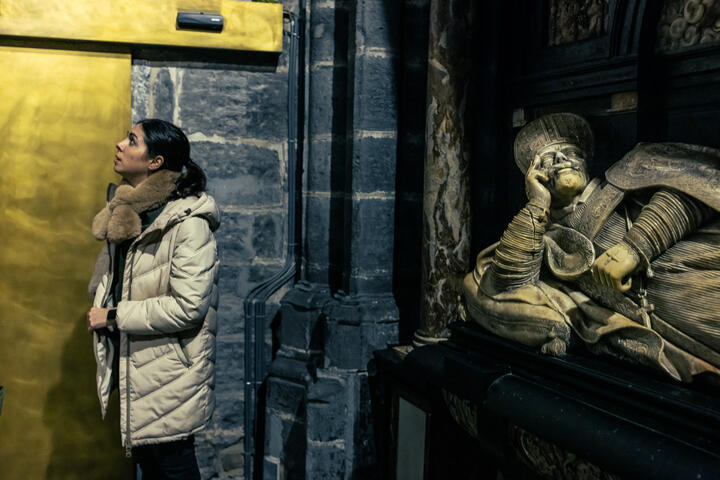
Things had to be improved. When I stepped into the project in 2017, it had already been decided to move the painting to the Sacrament chapel at the front of the church. But making a Gothic monument with a Romanesque crypt and Baroque choir accessible was no simple task. There were lots of level differences and we wanted to avoid those typical stair lifts. Eventually, building a new structure with a single lift shaft was the most elegant solution.
If visitors tell me that they hardly noticed the new structure, I consider that the greatest compliment.
A wall running through a body
Over the course of the project, archaeologists made one discovery after another. In the crypt and bishop’s garden, over 1,000 skeletons were unearthed, including a children’s graveyard. We already knew that people wanted to be buried as close to the church as possible in the Middle Ages, but we had not expected to find up to 16 layers of bodies placed on top of each other.
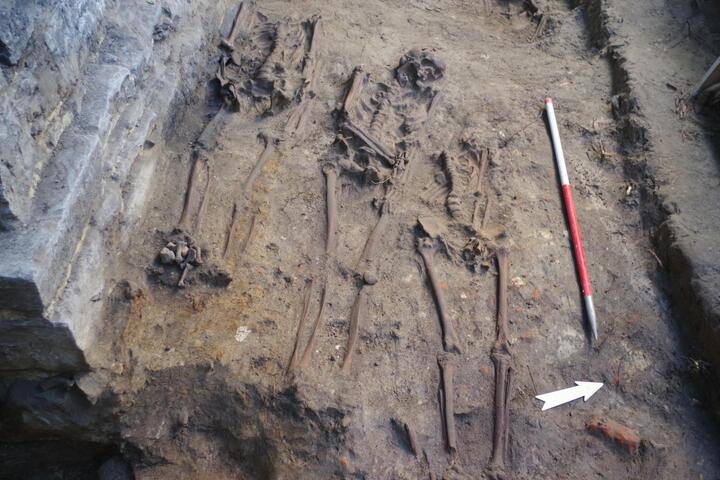
It is evident that they did not treat the dead in the same way as we do today. Nowadays, we spend months making 3D scans of the finds and meticulously documenting all the bones found. Back then, they simply dug a foundation for a chapel right through a body: we found a skeleton that had been cut in half by a wall.
Endless meetings
As the coordinator of a project of many years, I was sort of the intermediary between all parties involved: technical and stability engineers, different contractors, the government authorities who funded the project … When the archaeologists stepped in as well, we were having meetings with fifteen people.
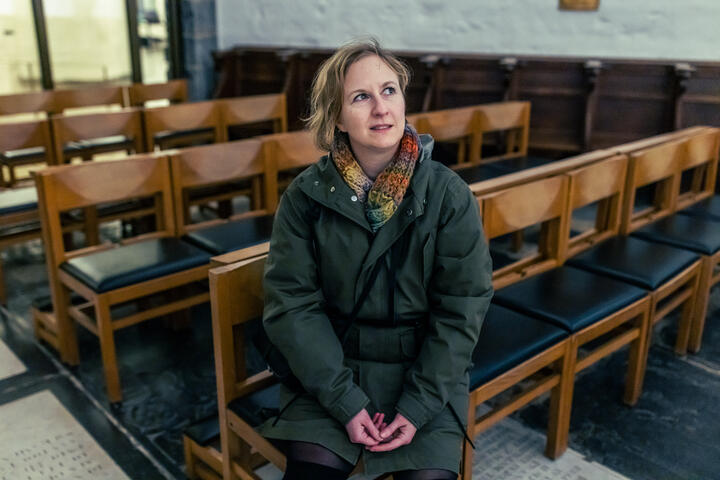
These meetings could take up a day and a half a week. Every week. And then there was the COVID-19 pandemic. I won’t encounter another project of that scale any time soon in my career. But it was worth it.
Less is more
What I love is that visitors can now look at the cathedral from a totally different perspective thanks to the new structure. If you climb the stairs, for example, you come eye to eye with a stained-glass window which visitors could not see in such detail before. And yet, the artisan who made it put in all those details, like the coat of arms of Ghent. The same is true for the Ghent Altarpiece: Jan Van Eyck painted the hairs on Adam's chest, even though they could not be seen by the public from ground level.
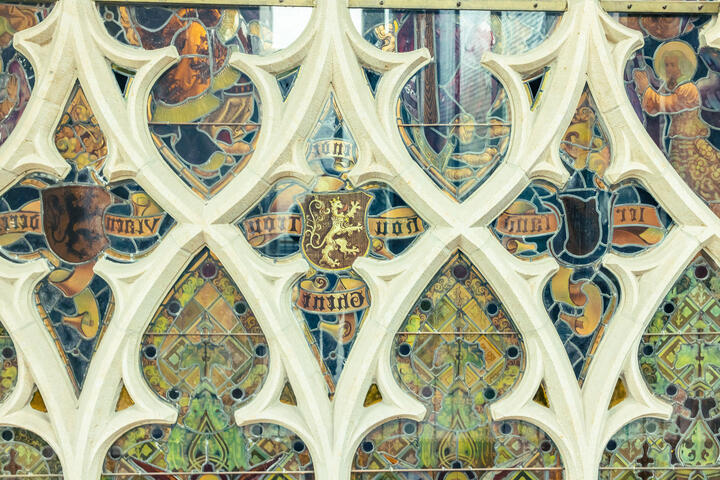
Did they do it in honour of God? Perhaps. But I think professional pride was involved as well. As a craftsman, you want your work to be perfect. I feel the same way about my job. But mind you, for us, it was of the utmost importance that we worked subtly. You cannot see the new structure from the outside of the cathedral, because it is enclosed in the bishop’s garden. If visitors tell me that they hardly noticed the new structure, I consider that the greatest compliment.
Chainsaw in the cathedral
Nevertheless, the interventions were quite drastic. For instance, we had to make an opening in the wall in two places. We had to cut through the 14th-century Tournai stone with a huge chainsaw and hope for the best ... In the end, the wall turned out to be in such a good state that we decided to keep the intervention entirely visible. We did not add a doorframe, so you can feel the ‘heart’ of the old wall.
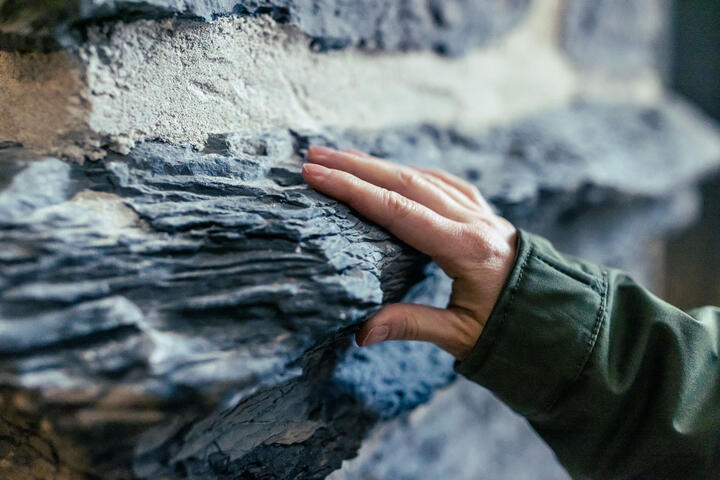
I often feel the materials I work with. I am sometimes more blown away by a detail than by the huge nave of a cathedral. I will walk past a building and suddenly stop to admire a stone, purely to feel how it was carved. If I step into a church abroad, I immediately notice the damage to the masonry or efflorescence due to exposure to moisture. (I doubt whether I’m the most fun person to go on holiday with.)
A thread through the cathedral
Am I proud of the result? Certainly, especially of the intuitive circulation. You find your way almost automatically. We made this happen by means of the material: a single brass ‘thread’ runs through the various spaces. You start your visit at the brass reception desk, follow the brass handrail while going up the stairs, pass through the brass doors, etc. until you reach the Ghent Altarpiece. Purely by using your intuition. And it is such a beautiful material …
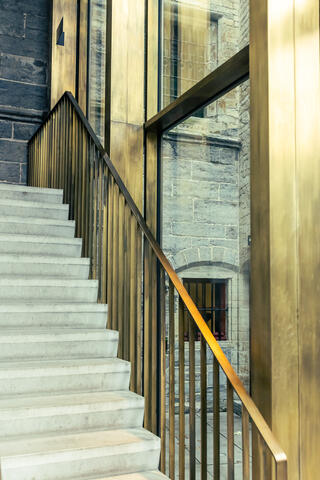
The oaks doors, on the other hand, always lead to spaces that are not open to the public. You spontaneously overlook them. We have put up signs indicating the walking direction, but most people don’t even notice them. Unless they need to use the toilet. That is probably the conclusion for me: the less you see our work, the better. As long as you can feel it, it’s a success.
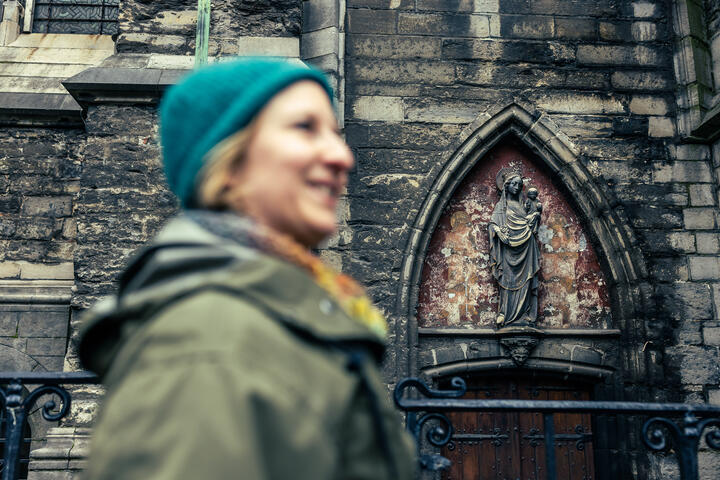
Maaike Blancke
Maaike Blancke (Bressers Architecten) from Ghent is an art historian, interior architect and restoration expert. She worked on several Ghent landmarks, including the kiosk in Citadelpark and the Town Hall, but her biggest feat so far is the new visitor centre in St Bavo's Cathedral which houses the restored Ghent Altarpiece.

